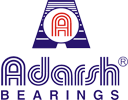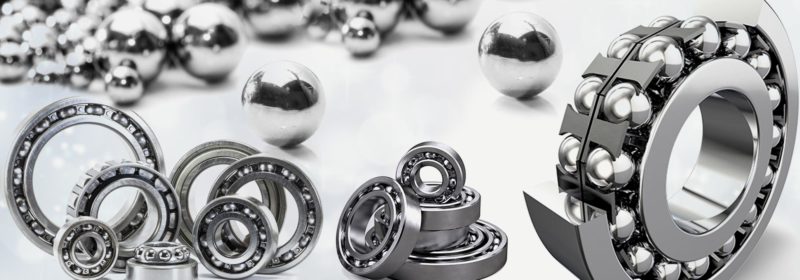There are several steps and methods mechanics follow to clean up their bearings. Some bearings require surface cleaning while some may require deep cleaning of the bearings. Here are some of the simple steps that can be used to clean the bearings when they are off-wheels:
Step 1 – Taking off the bearing wheel
Taking off the bearing wheel
The main reason bearings fail is because they get stuck, it could be due to overheating or simply because they remained for years simply after their first use. So, one can take proper care of bearings by maintaining them well.
For maintenance of bearings, you need the grease removing agent, reliable grease to lubricate, a needle or pin to extract the dust, a waterproof container, and kitchen paper.
Step 2 – Cleaning the surface of the bearings
Once you get off the bearings wheels, the first and foremost step is to get rid of the dust on the surface. You can now see the type of bearing, use kitchen paper or a toothbrush to expel the dust. Make circles from inside to outside of the bearing to avoid dirt entering the cage under the cap. Get rid of surplus grease by wiping it off with kitchen paper.
Step 3 – Checking the type of bearings
In the early days, one could check all the vital information about bearings (types, quality, etc) right on the bearings cap but now all of that has disappeared and marketing has taken place. Some bearings may not be dismantled hence care should be taken to check for proper information. Each bearing type has a set of instructions to be followed for proper maintenance and long-running of the bearing.
How to maintain bearing clearance?
Clearance of bearings is one essential part of maintaining your bearings for a longer duration of time. For cleaning your bearings, you do not have to necessarily dismantle them. Hence avoid dismantling bearings as far as possible.
Remember – Less mistreated are the more waterproof ones.
The dismantling of bearings is a very painful operation, it leads to loss of waterproofing enclosure, and it may also lead to distortion of caps and the balls. The gains one gets are not at all worth the potential risks a mechanic takes.
Now, let us see how to take care of bearings. Basically, it has to be a very light and efficient maintenance experience. Ideally, check your machine bearings every 3-5 rounds of operations. It also highly depends on the intensity of operation, the speed, the time, the load bearings take, etc.
Steps that will clean bearings:
- Remove the rubber shield – Mildly remove the non-contact rubber shield of the bearing, you can make use of a push pin for prying the shield upwards. It should pop out and quite easily, do not bend or cut the seal. If the shields are bent, it would not fix well and can allow contaminants into the bearing.
- Cage removal – You can clean your bearings thoroughly with a removed ball retainer or the cage. A straightened paper clip can be used to remove ball retainer out. Once the retainer is out, you can remove the balls and place them in a secured place.
- Cleaning the bearings and the ball retainers – Soak the balls in the cleaning solution in a metal jar. Do not forget to use rubber gloves and eye protection. Slowly stir the jar so that the solution flushes through the ball bearings. Replace the dirty solution with a clean solution until the time the solution doesn’t change its color.
- Drying your bearings – Remove the balls and retainers from the solution and dry them as soon as possible. Take care to not let any of the cleaning agents enter your eyes or spill on the cloth.
- Reinstalling the cages – Make use of paper clips to spread balls evenly and insert into the ball retainer then cautiously snap the ball retainers back into its place. Once you have retainers back in the bearings, check if each of the bearings spins freely.
- Lubricating the bearings – Never use your bearings without proper lubrication. Since the bearings work faster without a lubricant, do not be under the impression that it is working great. Bearings should run at a regular pace not too smooth or not too hard. Bearings without lubricant will fail quickly and may cause freezing up leading to further deterioration in its working.
- Reinstalling clean rubber shields – Place each of the shields flat on one side where the balls can be visible. Then press the shield gently into the place using your thumb into a rolling action. Shields are usually identical hence follow a proper process on both sides o of the bearings. Spin each bearing properly to check, if they move smoothly for a couple of revolutions to distribute lubricant evenly across the entire bearings.
- Reinstalling the bearings – While reinstalling the bearing always make sure to use a right tool that doesn’t put direct pressure on the shield. Any kind of dent in the shield will eventually cause friction and slow the running process. Use the proper tool that will only press the outer ring of the bearing while inserting. After installing the bearings, always make sure that the bearings are aligned properly so that the wheels spin freely and smoothly.
Here are some useful steps:
- Take the wheels off the frame.
- Clearance of bearings the surface of the bearings wheels, you can make use of a toothbrush or an air gun.
- Make a circle on the surface to take off the dust.
- Give a quick wipe and brush to the bearings.
Usually, in our fast-paced lives, we hardly pay attention to the machines we use even when they show the uneven flow of working. We only take steps when they completely give up. Regular maintenance and greasing are important aspects of keeping your bearings work for longer period of time.
Generally, mechanics know how to clean bearings but proper steps are definitely needed to make sure that the bearings are cleaned and greased well. There are instances where you have to clean your bearings from the surface, in some cases, it may require dismantling too. However, dismantling should be only done when it is extremely needed.
Bearing Cleaning | Bearing Maintenance | Bearing Lubrication | Bearing Grease | Ball Bearings | Clean Bearing regularly

